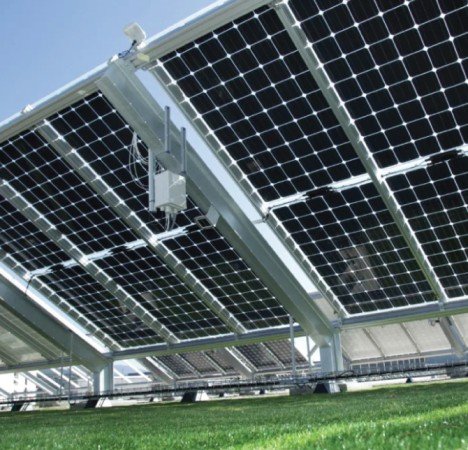Himatnagar, Gujarat



Solar Panel

Latest Technology
Gujarat
Bifacial Solar Panels
A bifacial panel can generate power from both sides, boosting overall electricity production. These types of panels have solar cells on both sides. This enables the panels to absorb light from the back as well as the front. Practically speaking, this means that a bifacial solar panel can absorb light that is reflected off the ground or another material.
Bifacial solar cells are also made of silicon. Putting it out simply, a bifacial solar cell is nothing but two silicon cells stacked together in such a way that they face the opposite direction.When many bifacial cells are stacked together, the resulting structure is a bifacial solar panel. Both sides of bifacial panels generate electricity since solar cells are present on both sides. Interestingly, there’s further variety in bifacial panels too: they can be made of polycrystalline cells as well as monocrystalline cells.
Latest Technology
Gujarat
Mono Perc Panels
The monofacial modules capture sunlight from the front side using M10 MONO PERC solar cells. With a technology that combines rear wafer surface passivation and local rear contacts to maximize light capture, mono PERC solar modules are paving the way for dramatically increased PV system efficiency so as to enhance the efficiency of electricity generation from sunlight.
PERC is the abbreviation of Passivated Emitter and Rear Cell. It is a modern technology, largely used to enhance the efficiency of solar modules. In standard modules, the sunlight that falls on the surface is either reflected, passed through the surface, or absorbed. Contrastingly, in the case of a solar panel mono perc, the light passed through the perc solar cell can be used again. The passivated layer present on the rear side of the solar panel is capable of reflecting the photons; thereby, increasing the amount of light absorbed by the module. It ensures a higher energy production.


Poly Technology
Gujarat
POLY CRYSTALLINE
All solar modules are passed through rigorous certification test our in house testing facilities enables us to assure best quality as we can test modules according to IEC standards.
These solar panels are made of multiple photovoltaic cells. Each cell contains silicon crystals which makes it function as a semiconductor device. When the photons from the sunlight fall on the PN junction (junction between N-type and P-type materials), it imparts energy to the electrons so that they can flow as electric current. Here, P-type materials are deficient of electrons while N-type materials have an abundance of electrons. Two electrodes are connected with the PV cells. The electrode that is on the top surface contains small wires while the electrode on the bottom is a foil-like conductor.
